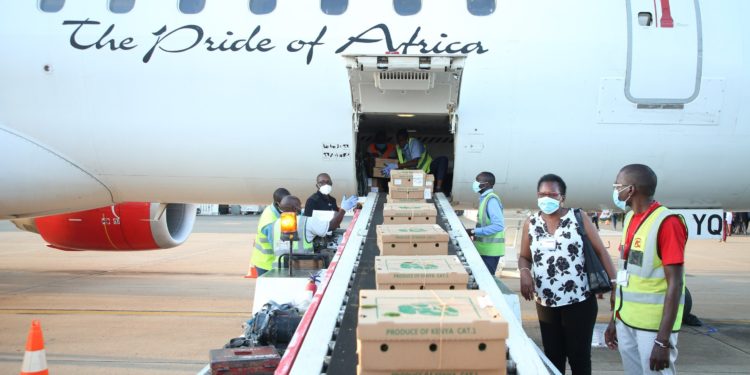Kenya achieved a substantial trade surplus with African countries in 2023, exceeding imports by a record KES 164 billion according to provisional data,
This surge, marking a 95.0% increase, was primarily driven by a noteworthy rise in the value of goods exported to other African nations, totaling KES 431.9 billion—an increase of 23.0% from the previous year’s KES 351.2 billion.
Additionally, a minor 0.3% increase in import expenditure, amounting to KES 267.9 billion from KES 267.0 billion, as reported by the Central Bank of Kenya, also contributed to this surplus.
The notable increase in trade earnings can be attributed to heightened demand for various products, including cement clinkers, lubricants, wheat flour, food preparations, and re-exports of kerosene-type jet fuel.
Key contributors to this surge in demand were countries such as Uganda, the Democratic Republic of the Congo, Tanzania, Egypt, Somalia, and South Sudan.
President William Ruto has been a leading advocate for the removal of trade barriers among African nations to facilitate the movement of goods, services, and labor. This advocacy aligns with the goal of integrating regional trading blocs to establish the African Continental Free Trade Agreement (AfCFTA), potentially creating a vast single market of 1.4 billion people with an estimated economic output exceeding USD 3 trillion.
President Ruto has proposed key initiatives, including the adoption of a payment system allowing settlement of intra-African trade deals in national currencies. This initiative aims to reduce reliance on the US dollar within intra-African trade transactions, streamlining business operations and fostering increased trade between countries.
Uganda emerged as Kenya’s largest market, with export earnings surpassing KES 100 billion for the first time, primarily driven by demand for cement clinkers. Trade with Uganda experienced a significant boost, reaching KES 127.2 billion, a 31.9% increase from the previous year’s KES 96.4 billion. Tanzania also showed substantial growth, with exports climbing 21.2% to KES 68.6 billion, driven mainly by re-exports of kerosene-type jet fuel.
Furthermore, the Democratic Republic of the Congo (DRC), a recent member of the East African Community bloc, experienced the fastest export growth rate of 48.5%, reaching KES 26.5 billion. Increased orders for products such as wheat flour, food preparations, and organic-surface active agents fueled this surge in demand from DRC, as reported by the Kenya National Bureau of Statistics (KNBS).
















